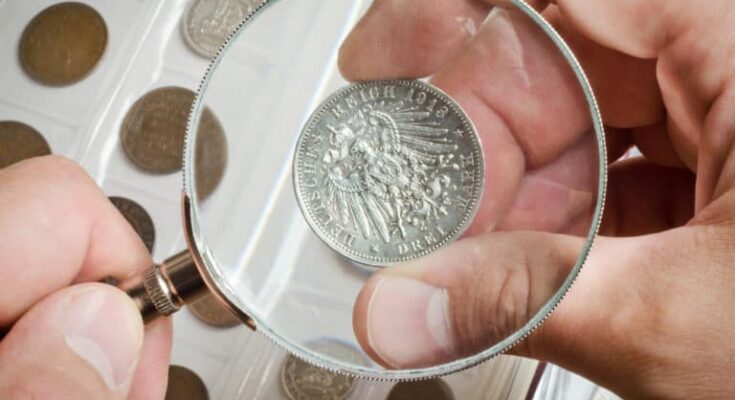Some people inherit a coin collection, while others stumble on an old coin in the street. Either way, their next thought will probably be what is it worth? If you asked yourself, how do I find the value of old coins, the good news is there are a couple of ways to get info. Let’s see.
Identify Your Coins

As you have probably known, some old coins can bring you thousands of dollars while others barely exceed their face value. So, the first step towards knowing the price of your coinage is to identify it.
1. Check for mint mark and year
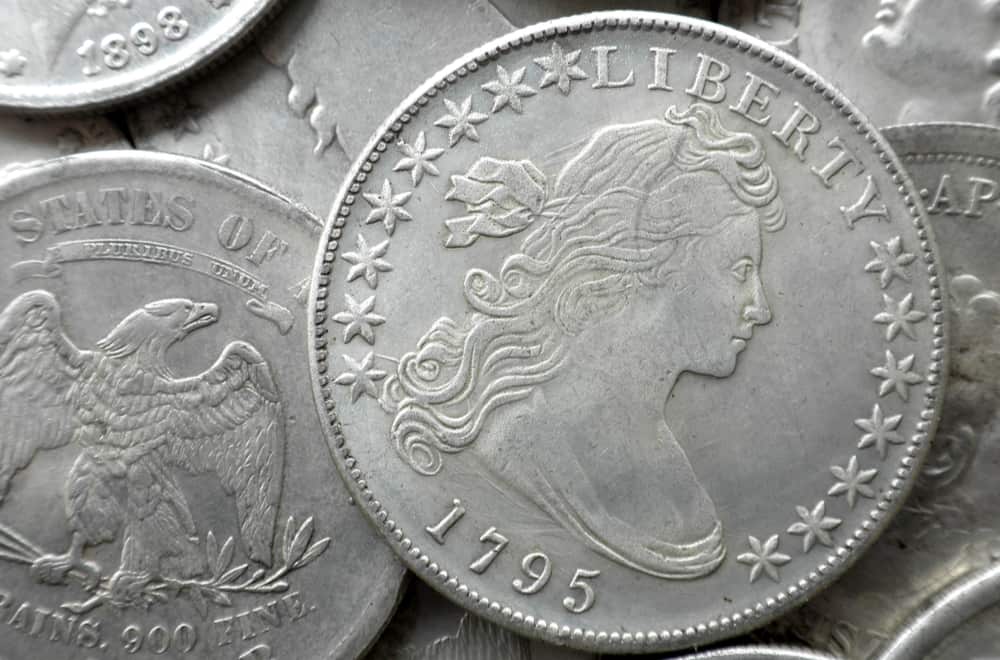
While some mints produced coins for years, others worked during limited historical periods. Except for Philadelphia, each mintage used a mint mark to label its coins.
| US Mint | Mint mark |
| Carson City (NV) | CC |
| Charlotte (NC) | C |
| Dahlonega (GA) | D |
| Denver (CO) | D |
| New Orleans (LA) | O |
| Philadelphia (PA) | P |
| San Francisco (CA) | S |
| West Point (NY) | W |
Check the coin carefully and see if you can find mintage year and a mint mark. This two information is enough to clarify which piece do you possess. If you can’t find a mark, this particular coin is probably part of the Philadelphia mintage.
You shouldn’t give up if your coin is severely damaged without a visible year. There are other options to discover what you have.
2. Take a photo
In the era of smartphones and the ubiquitous Internet, you can quickly find information about any coin. Take a photo and use a search-by-image option on Google or any other engine.
Plus, you can find freeware software, upload your photo and find similar ones. Chances are also that someone sells similar coins on eBay or Amazon.
3. Consult a book
If you don’t want to rely on online sources, you can always use a good book to help you find your coin. Many numismatists use A Guide Book of United States Coins, written by Richard S. Yeoman.
Since it is recognizable by its red cover, many collectors refer to it as a Red book. Some experts even recommend it as the Coin Bible since it also contains pricing guidelines for dealers and numismatics.
4. Watch for fakes and errors
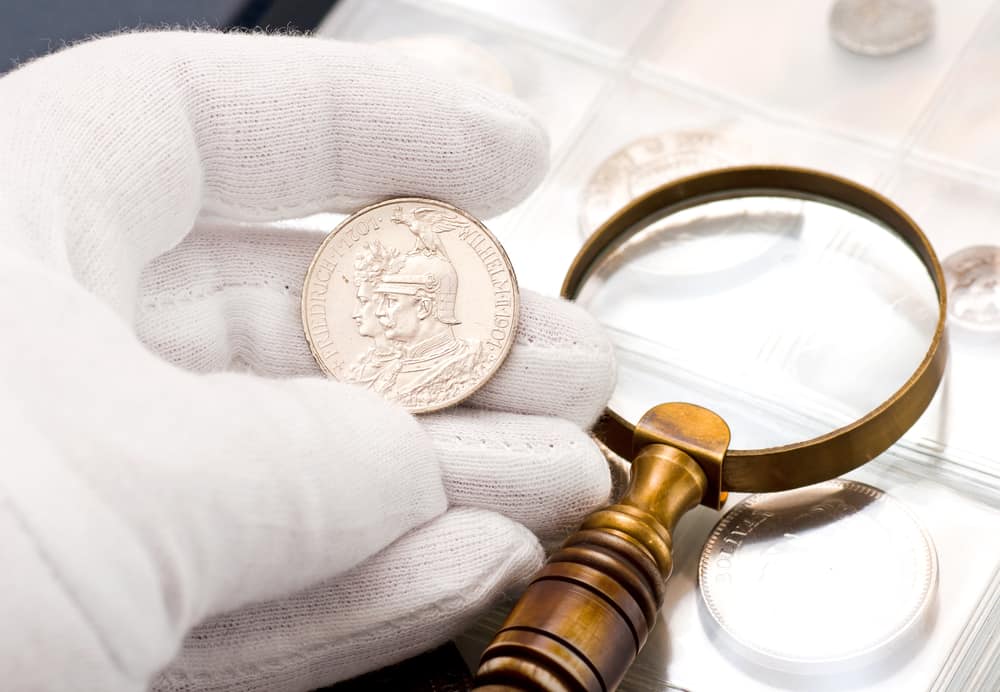
Once you identify your coin, compare it with another of the same mint and year. Pay attention to a mint mark, tiny details, and the coin edge. On rare occasions, your coin may have an error that increases its value. For instance, it can be double-struck or have a link or file mark.
On the other hand, rare coins are a lure for counterfeiters. A skilled forger can add or remove mint marks to increase a coin price. Some can even join two of them, combining their front and back.
If you are not sure you have a legitimate original coin, you should visit a professional and ask for a coin assessment.
5. Organize collection
If you have more than one coin, increase their value by organizing them in groups and batches. For example, sort coins by year or face value, depending on your collection.
Before going to the coin dealer, separate your Indian head pennies from Morgan dollars. That way, the collection is more tempting than when you show up with a bunch, increasing your chances to make a deal.
6. Lookup Old Coin Value with Online Tools
Coin Value Lookup provides a user-friendly database for identifying values of old coins. After selecting your coin’s country, denomination, year, and mint, you can view market prices based on the coin’s grade.
For U.S. coins, valuations are given for grades ranging from Good to Mint State, with Mint State sub-categorized from 60 to 70. The site also shows images of each coin so you can match visual appearance.
Factors Affecting Coin Value
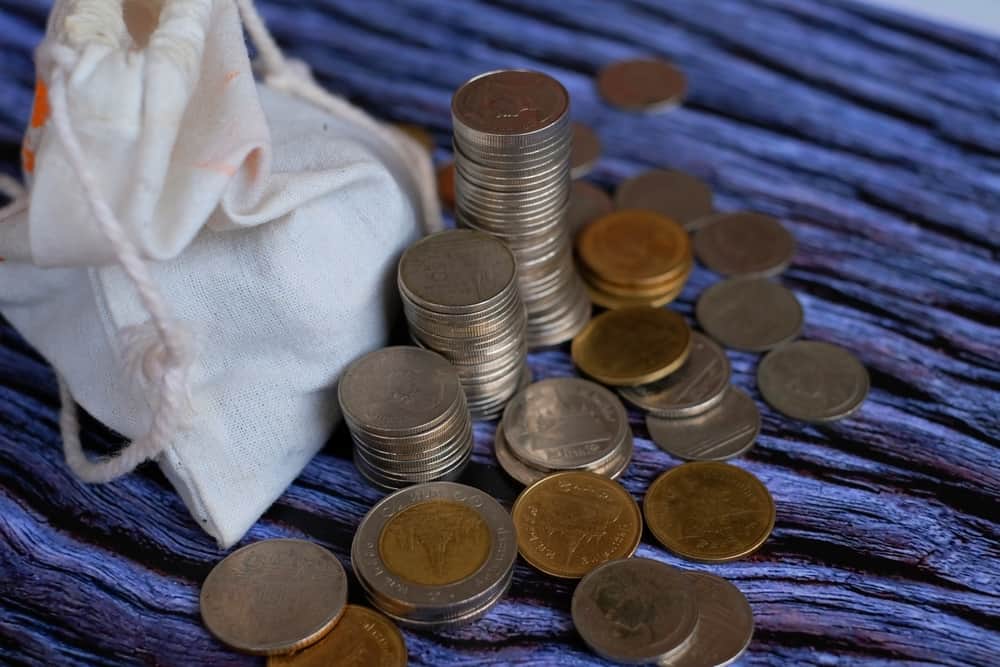
Suppose you have an 1883 Morgan silver dollar you wish to sell. The average value of this coin in good condition is between $30 and $40. Still, one MS 68 piece reached a record $49,938 at auction. Many factors affect the value of a single coin or collection, including:
6. Rarity and demand
As I have already mentioned, the mintage year is not the main factor in the coin value. The supply-demand relationship is more significant. There are millions of Indian head pennies, and they won’t bring you a fortune in most cases.
On the other hand, there are only five 1913 Liberty head nickels worldwide. Some experts estimate their value is at least $5,000,000. So, it is crucial to research how rare your coin is to determine its worth quickly.
7. Coins origin
If you have a rare and expensive coin, a paper trail that shows how it came into your possession is a vital document. You should use that document to prove provenance or ownership history.
If you plan to offer your coin at auction, official dealer, or museum, having provenance proof will add value to it. The purpose of this documentation is to prevent any legal, moral, or other possible problems in the future.
8. Metal composition
Most coins contain precious metals, such as silver, gold, or platinum. Its percentage determines the so-called intrinsic or melt value. Any coin you have is worth at least its melting value.
So, the precious metal percent is vital. For instance, the 1964 Kennedy half dollar contained 90% silver, but its content dropped to 40% from 1965 to 1970, decreasing its value.
9. Certificate
It is not the same to take a coin for evaluation to a local pawn shop or a professional coin grading company.
Although the latter option costs you money, companies like Numismatic Guaranty Corporation and Professional Coin Grading Service will provide you with a certificate to increase your coin value.
If you did your homework and established you have a rare and valuable coin, investing in a professional appraisal can benefit you in the long run.
10. Coin design and grading
Coin preservation plays a significant role in determining its value. For example, a coin in a good state can bring you $40 or a couple of hundreds when you have a piece in a mint condition.
| Sheldon coin grading scale | |
| Grading | Description |
| MS | A coin in mint state |
| AU | An about uncirculated coin |
| XF | A coin in extra fine condition |
| VF | A coin in very fine condition |
| F | A coin in fine condition |
| VG | A coin in very good condition |
| G | A coin in good condition |
| AG | An about good coin |
| FA | A coin in fair condition |
| PR | A coin in poor condition |
Uncirculated coins have never been used in everyday transactions, so they don’t show wear signs. In most cases, such a piece is worth multiple compared to circulated ones.
Professional grading services estimate your coin’s different features. They inspect the preservation of the design, luster, strike, letters, and numbers. Plus, these experts also look for signs of discoloration and damage.
Numismatists use the Sheldon Grading Scale, which assigns a coin a numerical value from 1 to 70. The more preserved the specimen, the higher the value. Numbers above 60 are reserved for pieces without visible damage.
Tips for Selling Your Coin
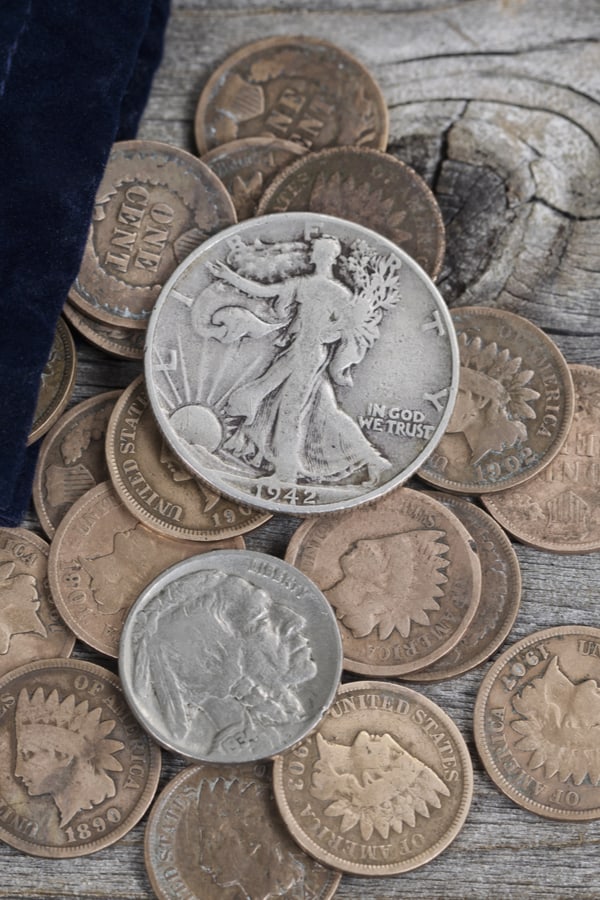
If you decide to sell your coin or collection after identifying them, there are a couple of things to think about. The estimation value you got from an expert doesn’t guarantee that the buyer will offer the same amount. Fortunately, there are a few expert tips that can help you.
11. Never clean your coins
The best way to sell your coin is to offer it in ‘as it is’ condition. Using a cleaning solution, or worse, strong acids to make a piece more shiny or appealing can damage it and decrease its value. Plus, you can ruin coin luster and cause discoloration.
12. Handle with care
Careless handling can ruin your coin. If you own a rare piece you want to trade, keep it on a cotton or cloth pad. Don’t forget to wash your hands before taking the coin and always hold it by the edges to avoid leaving your fingerprints on the surface.
Many professional dealers use gloves while working with precious coins, but some avoid them due to the increased risk of dropping them.
13. Visit local coin club
If you have a fine coin collection, consider connecting with the numismatist community. Joining the American Numismatic Association is a great way to find people with similar interests and find out more about your collection.
You can also visit a local coin club and inform its members you have some coins to sell. Not only is there a chance to find a potential buyer there, but you can get valuable advice from others.
14. Selling options
There are several ways to sell your coin. You can contact the auction house, visit a nearby coin dealer, or post it online on sites like Amazon or eBay. Each of these options has its pros and cons.
For example, walking in a shop and selling a coin is the quickest way to get some money, which is the best solution when you are in a hurry. However, that also means you will get less money than you expect. Plus, a dealer plans to re-sell your coin, so you can’t get the retail price.
On the other hand, selling online is tedious and time-consuming. You need to take photos of coins, reply to messages and comments, and have information ready in advance about the piece you want to sell. Experienced numismatists will ask about grading, color, and possible flaws. If you don’t know how to respond, sales will go much harder.
Generally, auctions are the best way to sell scarce coins. Many collections have reached their record value precisely through auctions. Still, expect to pay the fee in advance and be prepared to wait for months until the coin comes to auction. If you have a standard piece worth under $100, you should choose another option.
Summary
Once you identify your coin, you can quickly determine its value. Handle old coins with care, and don’t try to clean them. The vital factors affecting coin price are rarity and condition. The better the piece is preserved, the more it is worth.
